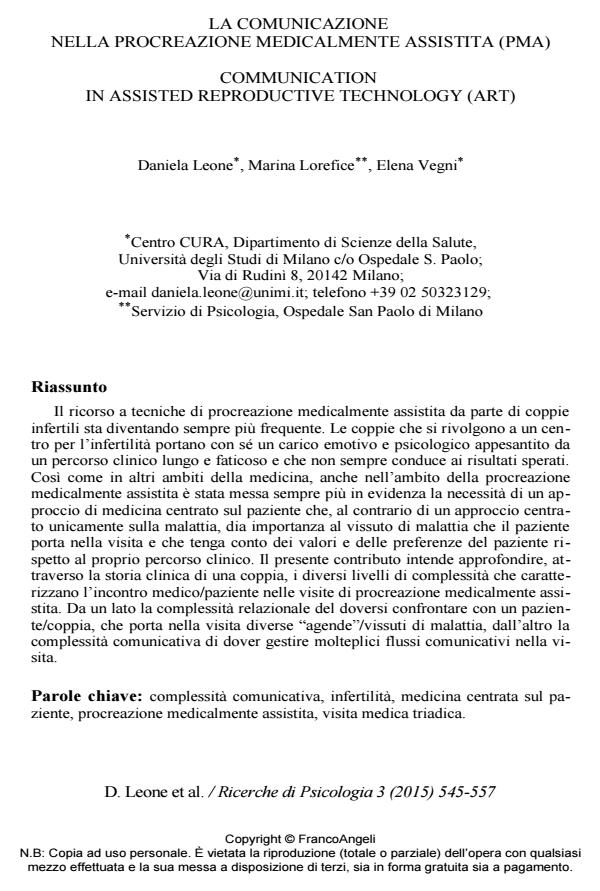Communication in assisted reproductive technology (art)
Journal title RICERCHE DI PSICOLOGIA
Author/s Daniela Leone, Marina Lorefice, Elena Vegni
Publishing Year 2015 Issue 2015/3
Language Italian Pages 13 P. 545-557 File size 172 KB
DOI 10.3280/RIP2015-003007
DOI is like a bar code for intellectual property: to have more infomation
click here
Below, you can see the article first page
If you want to buy this article in PDF format, you can do it, following the instructions to buy download credits

FrancoAngeli is member of Publishers International Linking Association, Inc (PILA), a not-for-profit association which run the CrossRef service enabling links to and from online scholarly content.
It is becoming increasingly frequent for infertile couples to resort to medically assisted reproduction technology. Couples turning to infertility centers are often under emotional and psychological strain as a result of a long and painful clinical journey that seldom gives the results they hoped for. As for other areas in medicine, in medically assisted reproduction technology settings a need for a patient centered clinical approach has become increasingly important for it considers, as opposed to a disease centered approach, the patients’ illness perception, their values and their treatment’s preferences. The case study described in this article looks at the different levels of complexity of the doctor-patient relationship during the assisted reproductive technology check-ups. The case study shows on one hand the relational complexity of having to deal with patients/couples and their specific illness perceptions; on the other hand it shows the communicative complexity of having to manage multiple communicative flows during the check-ups.
Keywords: Assisted reproductive technology, communicative complexity, infertility, patient centered medicine, triadic medical consultation.
Daniela Leone, Marina Lorefice, Elena Vegni, La comunicazione nella procreazione medicalmente assistita (pma) in "RICERCHE DI PSICOLOGIA " 3/2015, pp 545-557, DOI: 10.3280/RIP2015-003007